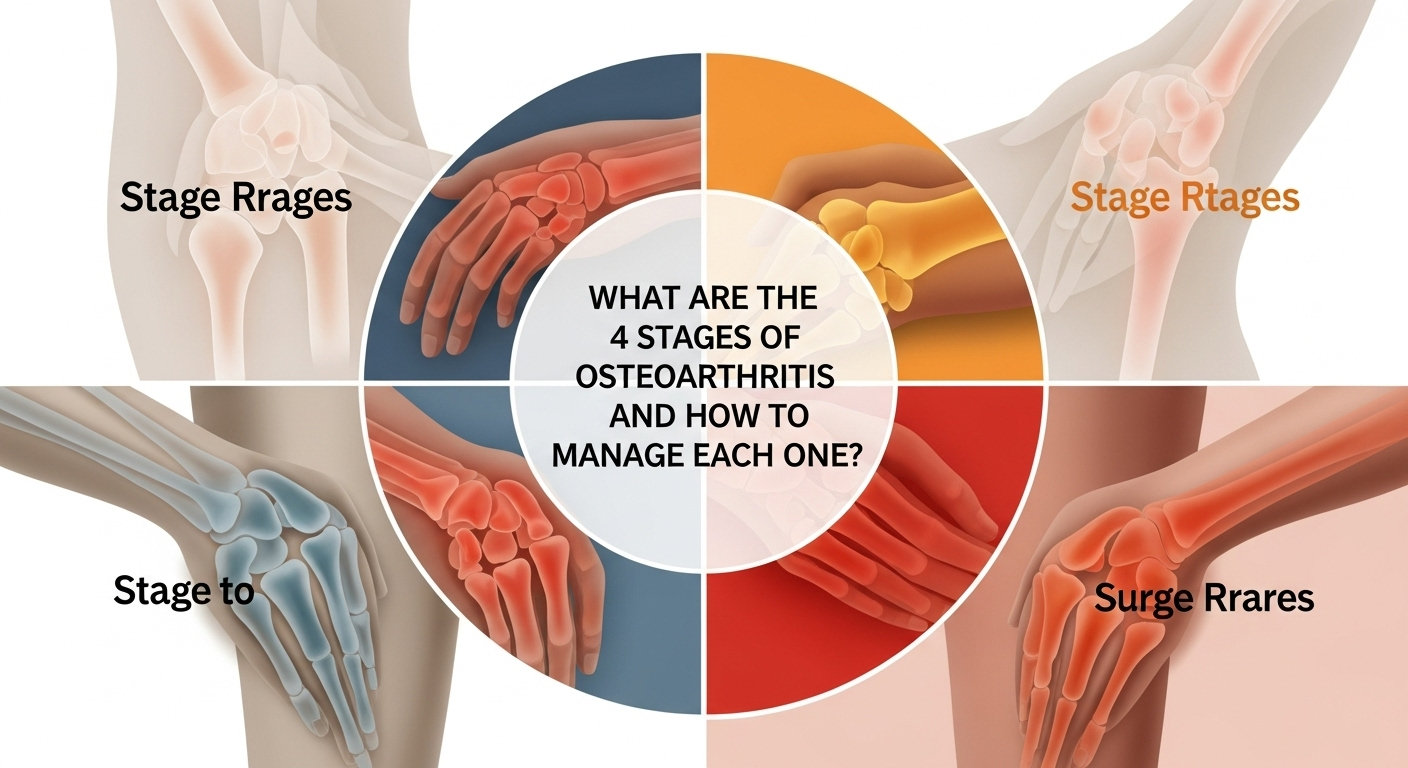Osteoarthritis (OA), also called osteoarthrosis, is the most common type of arthritis affecting millions worldwide. This is a type of degenerative joint disease, which progresses with the passage of time but when identified early enough and managed accordingly, the progress of the disease may be slowed or checked. In the case of osteoarthritis, knowing the 4 stages of osteoarthritis can make you do the necessary steps at the necessary time.
We will discuss the four categories of osteoarthritis in detail and give information about osteoarthritis symptoms and how to control each of these types, preferably in areas such as knees and hips that are the most affected.
Understanding Osteoarthritis Progression
Osteoarthritis is produced by the slow degeneration of the cartilage?that?s the cushioning tissue covering your joints. It may occur in any joint but the most severe joints are the knees, hips, hands and the spine.
This cartilage is worn off through time leading to pain, swelling and loss of mobility. But how does this progression happen?
Stage 1: Minor Osteoarthritis
Symptoms:
- Slight joint discomfort after activity
- Minimal cartilage loss seen in X-rays
- Possible bone spur development
Management Tips:
- Lifestyle Changes: Have a healthy weight to minimize burden on the joints.
- Supplements: Consider glucosamine and chondroitin sulfate for cartilage support.
- Exercise: Low impact movements such as swimming or cycling maintain joint flexibility.
Pro Tip: At this point, exercise and diet can prevent not only further degeneration and lower the possibility of OA spreading to the other joints.
Stage 2: Mild Osteoarthritis
Symptoms:
- Noticeable stiffness, especially in the morning
- Discomfort during daily activities
- Visible joint space narrowing and cartilage thinning
Management Tips:
- Physical Therapy: Strengthen surrounding muscles to support the joint.
- Anti-inflammatory Diet: Include omega-3-rich foods like salmon and flaxseed.
- Pain Management: Use NSAIDs as needed but under a doctor’s guidance.
Patients often ask, “Will osteoarthritis spread to other joints?” Although OA usually occurs in any particular joint due to the wear and tear of the surrounding, the biomechanical stress exposure may result in the multi-joint affection in case it is not treated.
Stage 3: Moderate Osteoarthritis
Symptoms:
- Persistent joint pain and inflammation
- Reduced joint function and flexibility
- Frequent stiffness with moderate cartilage loss
Management Tips:
- Injections: Corticosteroid or hyaluronic acid injections may reduce inflammation.
- Bracing: Especially useful for knee and hip osteoarthritis stages.
- Alternative Therapies: Acupuncture or electrical stimulation may provide relief.
Resource Tip: Visit the Arthritis Foundation for professional guidance and support.
Stage 4: Severe (End-Stage) Osteoarthritis
Symptoms:
- Constant pain even at rest
- Major cartilage loss; bones may grind together
- Limited joint movement or complete immobility
Management Tips:
- Non-Surgical:
- Advanced physical therapy
- Assistive devices like canes or walkers
- PRP (Platelet-rich plasma) therapy
- Surgical:
- Joint replacement surgery (usually hip or knee)
- Consider minimally invasive approaches if eligible
Amongst people interested in nonsurgical treatment of hip arthritis, stem cell treatment, aquatic therapy, and regenerative medicine offer encouraging results that need to be supported by clinical evidence.
Read: Prostadine Colibrim vs Other Supplements: Which One Works Best for Prostate Health?
Can You Prevent Osteoarthritis from Getting Worse?
Yes. OA progression can be severely slowed or delayed by having the disease diagnosed early and having an individual care plan. Such programs as Better Together OA can help chronically ill patients with joint conditions in a structured manner and entail community-based care, physical activity, and learning.
Conclusion
There are four major stages that the progress of osteoarthritis goes through and that are in need of specific care. Early symptoms identification and treatment with appropriate strategies can help you to decelerate its development and enhance the condition of your joints without undergoing surgery. Early action makes all the difference.
FAQ: Common Questions About Osteoarthritis
What is the difference between osteoarthritis and osteoarthrosis?
They’re often used interchangeably. Osteoarthrosis is a more specific term: it means joint degeneration, but not inflammatory. Osteoarthritis is a more specific term: it focuses on the inflammatory alternative of this issue.
Is osteoarthritis only age-related?
No. Whereas age is a major risk factor; joint injuries, obesity, heritable factors/genetics, and cartilage diseases are also other contributors to the early OA.
Can you reverse osteoarthritis?
Osteoarthritis can’t be reversed, but symptoms and joint health can be managed effectively—especially if intervention starts early.



